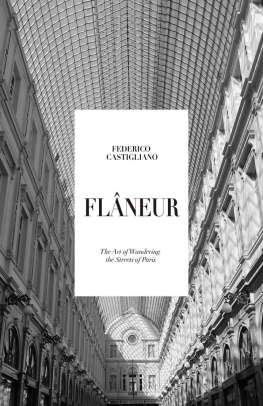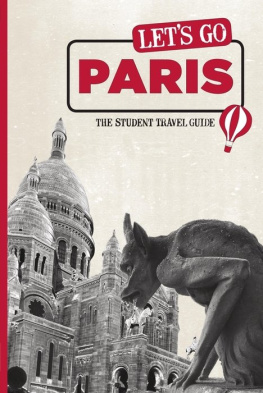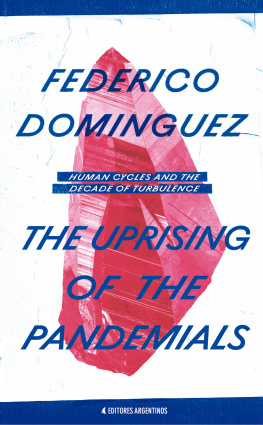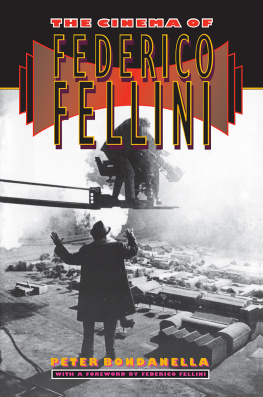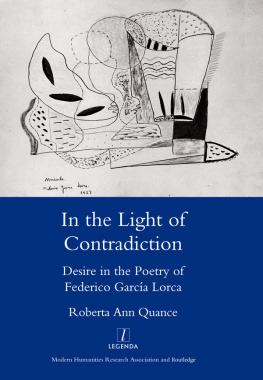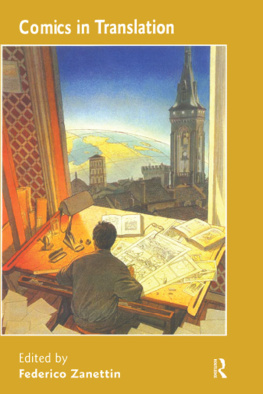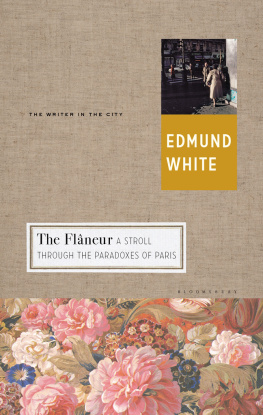Federico Castigliano - Flâneur: The Art of Wandering the Streets of Paris
Here you can read online Federico Castigliano - Flâneur: The Art of Wandering the Streets of Paris full text of the book (entire story) in english for free. Download pdf and epub, get meaning, cover and reviews about this ebook. year: 2016, publisher: Federico Castigliano, genre: Romance novel. Description of the work, (preface) as well as reviews are available. Best literature library LitArk.com created for fans of good reading and offers a wide selection of genres:
Romance novel
Science fiction
Adventure
Detective
Science
History
Home and family
Prose
Art
Politics
Computer
Non-fiction
Religion
Business
Children
Humor
Choose a favorite category and find really read worthwhile books. Enjoy immersion in the world of imagination, feel the emotions of the characters or learn something new for yourself, make an fascinating discovery.
- Book:Flâneur: The Art of Wandering the Streets of Paris
- Author:
- Publisher:Federico Castigliano
- Genre:
- Year:2016
- Rating:4 / 5
- Favourites:Add to favourites
- Your mark:
- 80
- 1
- 2
- 3
- 4
- 5
Flâneur: The Art of Wandering the Streets of Paris: summary, description and annotation
We offer to read an annotation, description, summary or preface (depends on what the author of the book "Flâneur: The Art of Wandering the Streets of Paris" wrote himself). If you haven't found the necessary information about the book — write in the comments, we will try to find it.
Flâneur: The Art of Wandering the Streets of Paris — read online for free the complete book (whole text) full work
Below is the text of the book, divided by pages. System saving the place of the last page read, allows you to conveniently read the book "Flâneur: The Art of Wandering the Streets of Paris" online for free, without having to search again every time where you left off. Put a bookmark, and you can go to the page where you finished reading at any time.
Font size:
Interval:
Bookmark:
Flneur
Flneur
The Art of Wandering the Streets of Paris
FEDERICO CASTIGLIANO
2016 Federico Castigliano
ISBN: 9781534911451
All rights reserved. No portion of this book may be reproduced in any form without permission from the publisher.
Authors page: www.facebook.com/intothestreet
ISBN: 1534911456
Library of Congress Control Number: 2016910623
CreateSpace Independent Publishing Platform
North Charleston, South Carolina

Table of Contents
Flneur: an idle man-about-town
(MERRIAM-WEBSTER DICTIONARY)
INSTRUCTIONS FOR READING THIS BOOK
T his book teaches how to wander aimlessly, how to get lost in the city. It is dedicated to those who are never sated, those incessantly amazed by the beauty of the world. Reading these pages will initiate you into flnerie : you will learn how to transform a simple walk into an exciting and memorable experience. You will find here some stories about flneurs , people who have lost their way and have then discovered new and wonderful things on their journey. You will find information about historical personages, authors and artists who have made the history of flnerie a literary and cultural tradition developed over the course of two centuries with special relevance to the city of Paris. You will find, furthermore, some ideas and suggestions for a creative and novel use of the city and its spaces. The structure of the book means it can be read in sequence, from the first to the last chapter, or more freely, adopting a flneur-like attitude that leaves the reader free to trace a preferred route within the text. All you have to bear in mind is a simple rule: the chapters with odd numbers are fiction, while the chapters with even numbers are theoretical or nonfiction. Each chapter has its own independent meaning, but is linked to the others by a web of correspondences and references. Even the positioning of the prologue and the epilogue can be inverted.
PROLOGUE INTO THE STREET
S ometimes, when the symphony of the city has been knocking at my door from early in the morning, I descend into the street, wrapped in my black overcoat, and set off along the bustling avenues of the Right Bank. These are the gloomy days of winter when Parisian melancholy torments the soul and provokes free spirits into a long-lasting drift with no end in sight. I do not make any appointments; I do not have any specific goal in mind. I wander aimlessly through the tentacular city. Yet, although determined to travel purely at random, I seem almost to be following the train tracks, a pre-ordained route, with no deviations. So I end up covering the entire stretch of the boulevards, several times from Rpublique to Madeleine, Madeleine to Rpublique. Through the fog, I look at the pale faades and shop windows that line the street. I contemplate the stuccoes and wrought-iron balconies. The austere elevations of the boulevard Haussmann. Then, when feverish and numbed by the cold and the neon lights, I take refuge under the dome of the Galeries Lafayette.
Paris is narcotic for a man alone, a never-ending labyrinth where lust for life is satisfied. The city appears like a series of sets, in which every sequence is connected to another by a fine thread, and the whole comes together within me to create a coherent film. On the hallowed territory of the city, walking has become, for me, an ascetic ritual. For this reason, when I am carried away by a sudden urge or struck by an apparition a distant sign, the swish of a skirt or a falling leaf I leave the main road and traipse the streets adjoining the boulevards. I wander through the faded little streets of the Sentier, towards the fine art auctions in Drouot, but mainly in the triangle bounded by rue Saint-Augustin, rue de Richelieu and avenue de lOpra that Far Eastern oasis centred around rue Sainte-Anne, my own little Tokyo.
Paris, we know, is no longer the centre of the world, but it is the perfect place to consecrate yourself to your own vices and, in my case, that typical Parisian habit which is to spend my days wandering about, with no end result. In the city, the intimacy of the villages alternate with great nineteenth-century boulevards, lined with bar and restaurant terraces, where people sit as if in the cinema, watching life go by. Thanks to the abundance and variety of its monuments and its dense, uninterrupted urban fabric, but also due to its uniquely interpenetrating public and private spaces, Paris is made to be walked. In this respect, the French capital differs from major cities of more recent origin, such as those in emerging countries, but also from other European cities with an artistic heritage. It is no accident that the art of wandering the city developed right here rather than in Venice for example, or in Rome and found expression in a rich cultural and literary tradition.
The figure of the solitary walking man, looking at the landscape of the city and its crowds, made its appearance in French art and literature towards the middle of the nineteenth century. The term flneur was used, in fact, to indicate a type of individual, usually an intellectual or artist, who strolled aimlessly around a Paris that was undergoing profound architectural and social transformation. Free and alone in the maze of the city, the flneur craves a revelation that might change his life and destiny. He seeks to capture and eventually to preserve, through artistic or literary expression, a new form of beauty, in accordance with the aesthetic criteria that were in the process of being defined in modern European culture. The establishment of metropolitan environments has influenced the literature and the arts of the modern era. At the same time, it is precisely through artistic and literary works that a particular image of the city has been constructed, assigning symbolic meaning to its physical forms and inventing different ways of using its spaces. The interplay between literature and reality evokes the metaphor of the city as a text or semiotic structure. The city appears to the flneur as something intelligible, a plot or a story that can be told.
During the years I spent in Paris, I too was a flneur. I sought to explore more or less systematically every arrondissement , every neighborhood of the French capital. I tried to learn the names of the roads by heart, to remember the precise sequence of the faades of the buildings along a boulevard. I tried to observe the changes in mood of a square in the various moments of the day, in the four seasons, under different skies. And I tied the facts of my life so tightly to the spaces of the city, to the point that every corner of Paris reminds me of a conversation with a friend, an episode, a love. I know that many people use the streets of the city as a space to be crossed quickly in order to go from one place to another and get their business done. But my story is different. The first time I met Paris and Im not referring to the first time I visited the city as a tourist, but the first time I found myself alone and naked before it , that day Paris was for me an exciting mystery. We were both very young. And then, gradually, I learned to get to know Paris more profoundly, to move through the city, to study its past, and our relationship became more intimate. Paris became part of me, but I am also part, in some way, of Paris.
Today many years have gone by and although the circumstances of my life have taken me far away, I still occasionally close my eyes and imagine a walk through Paris. Now that there is also a mental distance between me and this city, I wonder what remains of all that time spent walking like a madman, of that confused but passionate quest for a truth that I thought was inscribed on the faades of the buildings, entrapped in the atmosphere of a neighborhood. What remains, in the end, of a love? Of all the enterprises that one may attempt, of all the activities to which one can consecrate ones energies and youth, flnerie is certainly among the most useless. The flneur, by definition, is going nowhere. To become expert in the art of flnerie you have to study carefully the history of the city, train your eye, develop memory and orientation, reinforce your physical stamina. But your training as a flneur can have no professional opening, it leads neither to a successful career nor to celebrity. Balzac said that flnerie is a science, the gastronomy of the eye; but it is a science that, for the moment, has no academy or official recognition.
Next pageFont size:
Interval:
Bookmark:
Similar books «Flâneur: The Art of Wandering the Streets of Paris»
Look at similar books to Flâneur: The Art of Wandering the Streets of Paris. We have selected literature similar in name and meaning in the hope of providing readers with more options to find new, interesting, not yet read works.
Discussion, reviews of the book Flâneur: The Art of Wandering the Streets of Paris and just readers' own opinions. Leave your comments, write what you think about the work, its meaning or the main characters. Specify what exactly you liked and what you didn't like, and why you think so.

